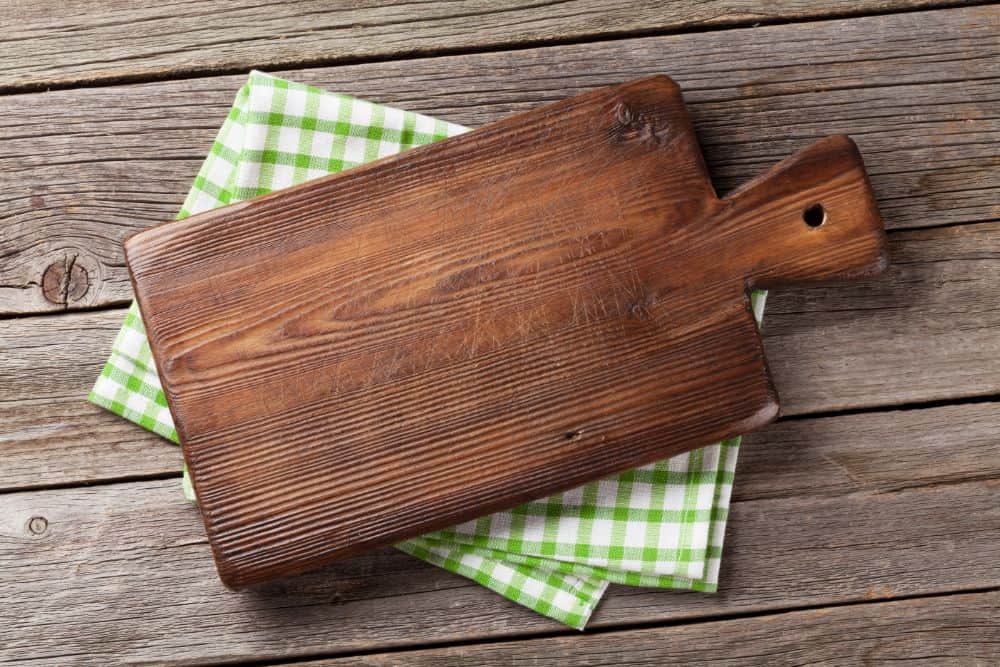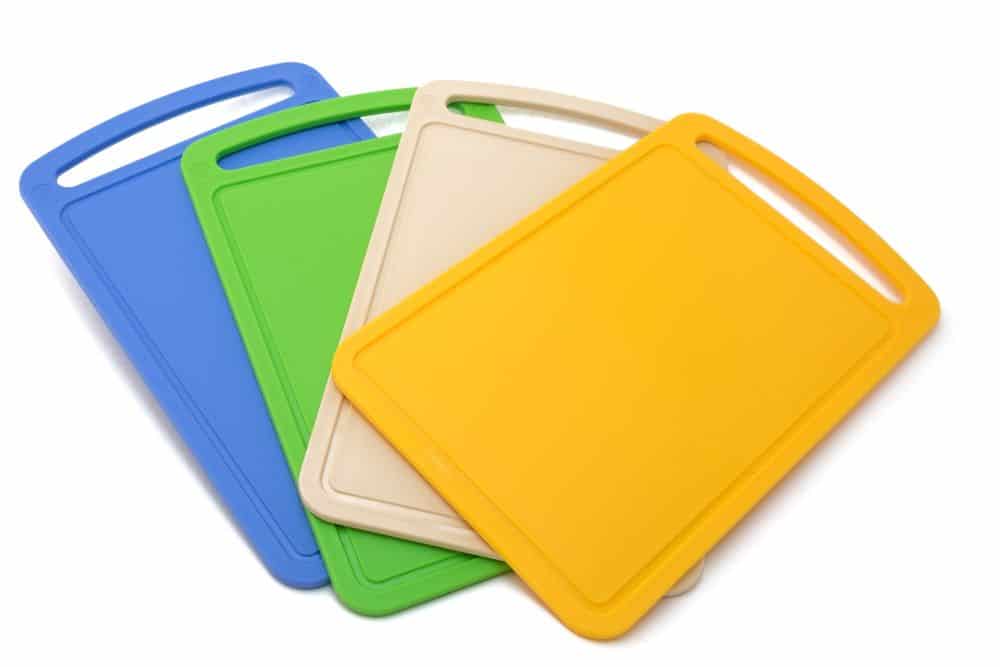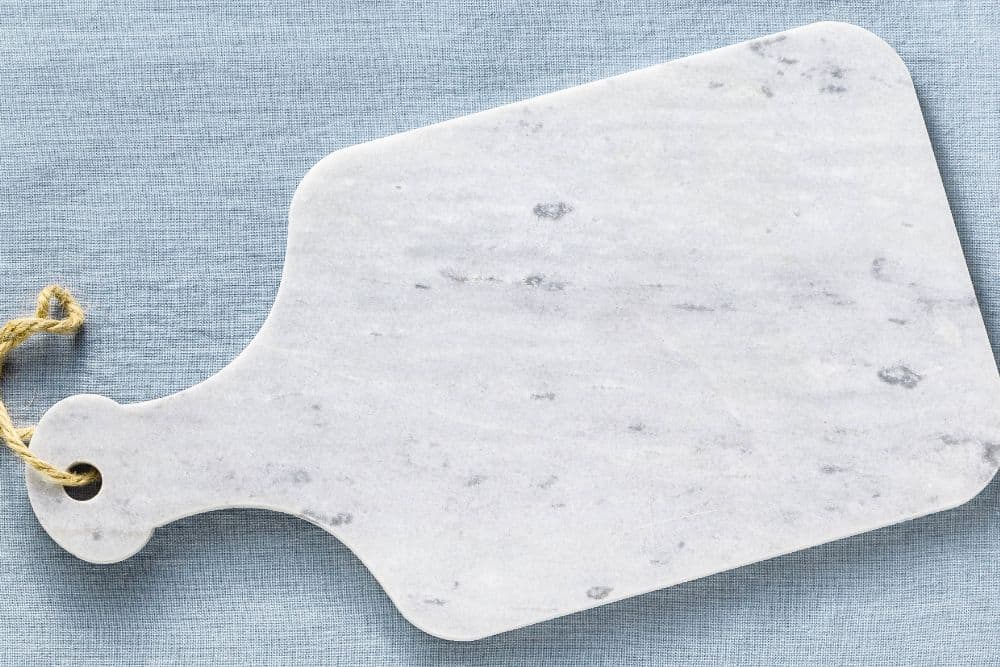Whether you’re working on plastic, bamboo, or wood cutting board, most have a limited lifespan. Replacing your chopping board isn’t all about aesthetics. Over time, wear and tear leaves grooves and knicks in your board, creating a perfect breeding ground for bacteria.
How to know it is time to replace your cutting board? Knowing when to replace a cutting board can be tricky. There’s no set time for replacing cutting boards. It depends highly on the use and material of the board. Most last at least a few years and can last longer when cared for properly.
All cutting boards need to be replaced eventually. From the plainest plastic board to thick wooden blocks, chopping boards wear out over time. When a board shows signs of heavy use, it might be time to get a replacement to prepare food safely.
Some cutting boards show signs of use faster than others. Consider the material of the cutting board and what preparations it will be used for when replacing a cutting board.
The most common materials for cutting boards are wood, bamboo, and plastic. Each of these has positive and negative aspects to its design. Using each type for their best function helps them last longer.
Wood cutting boards are the most varied. The functionality differs between the types of wood used when manufacturing the boards. Harder woods hold up well but also run the risk of damaging knives.

This property means wood chopping boards last longer than other varieties, though softwoods won’t hold up as well. Expect a wooden cutting board to last around five to ten years.
Since wood is a porous material, it is more likely to absorb excess moisture. This property makes wood cutting boards the best choice for slicing dry items like bread or cheeses. These boards can be used for cutting any food item, but sticking to low water content ingredients will help wood boards last.
Plastic cutting boards need to be replaced more often than others. Generally, these varieties last around a few years. These boards are most easily scarred by knives creating spaces for bacteria to grow.

The advantage of a plastic cutting board is that they are extremely easy to clean. A plastic board can be washed quickly in a dishwasher. This quality makes these boards some of the best for cutting raw meat.
Bamboo is a similar material to wood and can sometimes last longer. The difference between a bamboo cutting board and a wooden cutting board is sustainability. Bamboo grows faster than other large hardwood trees.
The disadvantage of bamboo cutting boards is they cannot be cleaned in the dishwasher and should be washed by hand. Besides this, a bamboo board is very similar to other wooden boards. Like wood boards, this type of cutting board usually holds up for five or more years.
Bamboo is a dense material, so this means the surface of these boards is less likely to develop grooves from a particularly sharp knife. The board is also less likely to retain moisture and grow bacteria.
Of course, there are other types of cutting boards than the three most commonly used. Wood, bamboo, and plastic are generally used for their functionality. Cutting boards in different mediums are more about visual appeal than everyday use.
Options like glass and marble can be hard to scar, so they need to be replaced less frequently. However, these tough surfaces can damage knives and tend to be noisier than other types of boards. To retain the integrity of these kinds of boards, and the knives used on them, consider using them for presentation only.
In general, cutting or chopping boards should be replaced every few years, but a board should be replaced when it has excessive crevices and cuts regardless of timing. A cracked board should be discarded as soon as possible. Even cracks away from the center cause safety issues due to retained moisture.
The best way to keep a cutting board for as long as possible is to clean, sanitize, and care for the board. The specifics will be slightly different for each type of board, but there are ways for each to increase a cutting board’s longevity.
Now that we’ve explained how to know it is time to replace your cutting board, let’s learn about proper maintenance. Learning proper maintenance and care for cutting boards helps them to last longer. All cutting boards should be cleaned thoroughly after each use. Plastic boards are dishwasher safe, as are some wood boards. However, this is not the case for laminated wood, which deteriorates in water.

Hefty wooden boards shouldn’t be placed in the dishwasher either, as they can take a long time to dry out. Boards unsuitable for the dishwasher should be cleaned in hot water with dish soap. Even after cleaning, it’s still necessary to sanitize a cutting board. Soak boards in a diluted chlorine bleach solution. Use one tablespoon of bleach in the solution for each gallon of water.
Drying is another crucial step in cutting board maintenance. Boards that retain moisture are in danger of growing bacteria. Towel dry boards and let them sit out until fully dry. Storing a board before completely drying retains moisture.
For bamboo and wooden cutting boards, consider treating them with mineral oil or other products designed for these boards. Treating the surface of these boards helps repel liquid from absorbing. This also lessens the effect of lingering odors on wooden boards.
If a cutting board has already taken on an unpleasant scent, try a salt and lemon scrub. Use a sliced lemon and coarse salt to scrub the board vigorously. After scrubbing the board, wash it off in cool water and let it dry before storing. Lemon is a natural odor remover, and using this method helps cutting boards keep smelling fresh.
Another way to maintain cutting boards is to use them carefully. The sharpness and pressure applied when cutting with a knife can affect how long the board holds up. Excess use of force on a chopping board can cause knicks, which speeds up when it needs to be replaced. Proper knife skills and upkeep helps cutting boards last.
Even the kitchen with the best-maintained cutting board should have more than one for food preparation. If you need to switch between cutting raw meat and vegetables, having multiple boards makes cooking easier than washing a single board.
Convenience isn’t the only thing to consider regarding owning more than one board. Designating specific uses for boards creates a cleaner work environment. For example, even the most thorough cleans can sometimes miss tiny particles. Bacteria growing on a board used to cut meat could transfer to food eaten raw in this manner.
Food safety experts recommend using at least two cutting boards in order to prevent cross contamination. One should be used for cutting raw meat and seafood items that will be cooked. The other should be used for things like fruits, vegetables, bread, and cheeses. This method greatly reduces the risk of cross-contamination.
